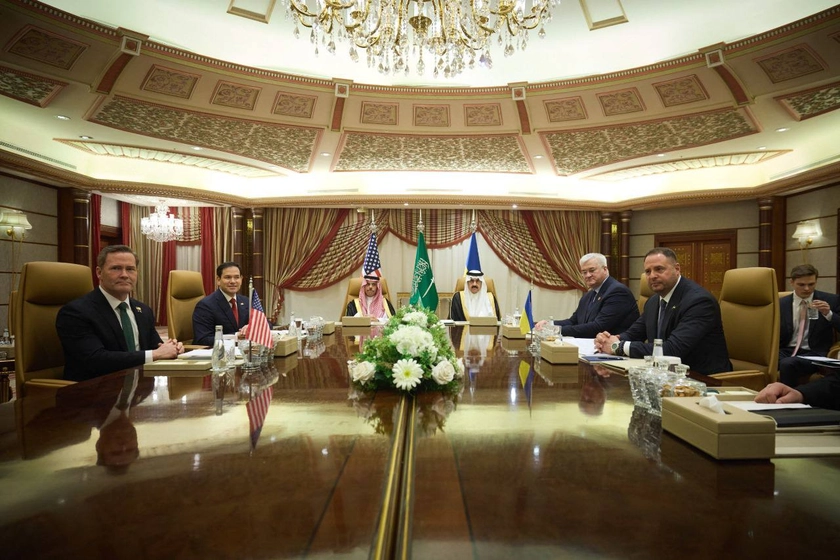Russia is falling apart, militarily as well as politically. After a successful counter-offensive in the north-east (still on-going) Ukraine is now succeeding in the south-east, liberating Lyman and numerous towns in the Kherson region.
The total number of liberated Ukrainian localities now stands at 1,534. Meanwhile, more than 700,000 people have left Russia following Vladimir Putin’s “partial mobilisation” announcement. Russia has officially admitted the loss of the strategic initiative, with formerly pro-Putin military bloggers turning on the Kremlin and criticising Russian authorities for their ineptitude.
JOIN US ON TELEGRAM
Follow our coverage of the war on the @Kyivpost_official.
I am elated and worried at the same time. My joy comes from the obvious reason of seeing evil defeated. My worry comes from knowing that Putin will not give up easily and still has a card to play – a tactical nuclear strike.
The yield and threat of a tactical nuclear attack
Unlike larger inter-continental ballistic missiles designed to take out whole cities, some tactical nuclear weapons have been specifically developed for the battlefield, with its rapidly shifting environment. Their yield can be as high as 50 kilotons but also as low as 0.1 kilotons. This makes them comparable to the two bombs the U.S. dropped on Hiroshima and Nagasaki (15 kilotons and 20 kilotons, respectively).
Between 70,000 and 80,000 people were killed by the Hiroshima blast and 35,000 to 40,000 people in Nagasaki. The latter is one of the hilliest cities in Japan, which saved many of its residents). A further 130,000 people in both cities were injured. According to different estimates, Russia has between 1,000 and 2,000 tactical nuclear warheads.
Poll: Most Americans Disapprove of Trump and His Handling of the War in Ukraine, US Economy
While this is not my base case scenario, I am especially worried that Russia may use tactical nukes against Ukraine, especially against a city such as Lviv. Both Kyiv – Ukraine’s heart – and Lviv – Ukraine’s star of the west – have remained relatively unmolested throughout the war. Both cities, however, have been hit by missiles before and are within Russia’s reach. The decision to leave both relatively unscathed has clearly been a political rather than a military one.
I am less concerned about the risk of an attack on Kyiv. Given its significance as a cradle of Eastern Orthodox Christianity and the original seat of the Kyivan Rus principality (to which Moscow likes to claim historical ties), annihilating Kyiv would distance Putin from even his closest supporters.
Lviv is a different story, however. In Russia, it has been historically portrayed as the bedrock of Ukraine’s nationalism, and one of the key supply hubs for humanitarian as well as military assistance Ukraine receives from the West. This makes Lviv both a high value political and military target. Attacking it could be Putin’s last hurrah and his way to install fear both within Russia and around the globe.
Is there a way to de-risk and avoid Russia’s nuclear blackmail?
There is one logical option – to admit Ukraine into NATO as soon as possible. Joining the Alliance would both extend to Ukraine the West’s defence umbrella, whilst also, somewhat perversely, gifting Putin a way out.
Putin cannot fathom the idea of being defeated by Ukraine, which he has long portrayed as a failed state. It would mean both the loss of face and the loss of control – and his position in Kremlin is not as secure as some may think. Putin is currently being challenged from all sides, by the “party of peace,” which is decrying the sanctions, as well as by “the party of war,” which is decrying his failure to capture Ukraine.
Putin’s decision to conduct sham referenda in the occupied Ukrainian territories, as well as the recent airstrikes on Ukraine carried out by the Russian strategic bombers stationed in Belarus, are the results of the growing influence of the “party of war.” If Russia continues to lose in Ukraine militarily – and it will – the “party of war” may push Putin to take action that even he would not be happy with.
Being defeated by a “mighty” enemy such as NATO is a different story. There is far less humiliation in such defeat – and far greater chance for Putin’s personal survival. If Ukraine were to become a NATO member, then, rather than facing one “failed state,” Russia will face the Alliance in its entirety.
In this scenario, Putin can command the withdrawal of Russia’s troops from the whole of Ukraine, including Crimea, then strengthen the hand of the “party of peace” and take the world back from the brink of nuclear annihilation.
NATO may not even need to put its boots on the ground.
Given enough support, Ukrainians will do their job.
The views expressed are the author’s and not necessarily of Kyiv Post.
You can also highlight the text and press Ctrl + Enter











